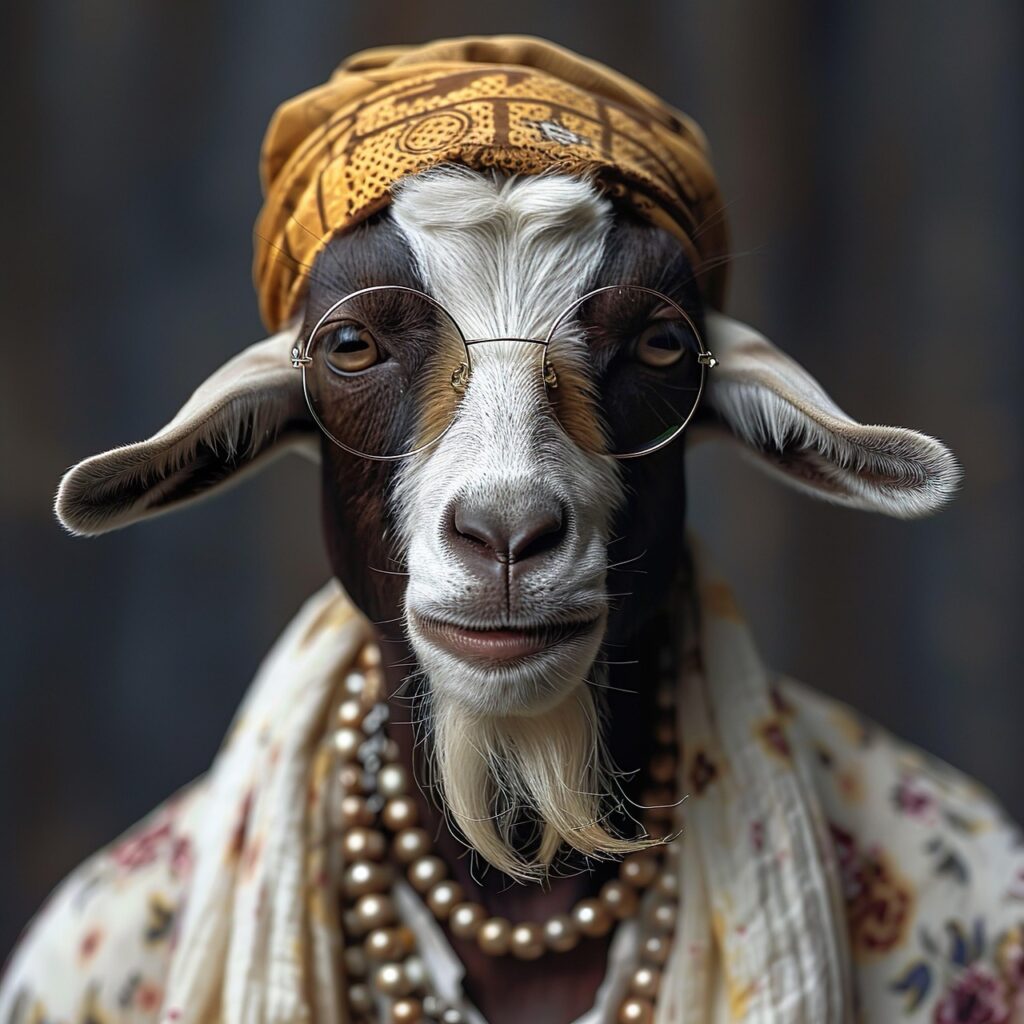
In a world where every second billboard features a celebrity hawking toothpaste, fintech, or fairness cream, CashKaro’s latest ad campaign didn’t just break the mould—it gleefully shredded it.
The Age of the Celebrity Endorsement Hangover
If you’ve watched Indian television in the last decade, you’ve seen it: Ranveer Singh peddling razors, Shah Rukh Khan solemnly recommending mutual funds, Amitabh Bachchan lending gravitas to everything from cement to cough syrup.
The logic is simple—borrow credibility, buy attention. But as the data reveals, this strategy is showing signs of fatigue. Oversaturation breeds “brand blur,” where even the most iconic faces become forgettable backdrops. According to the Celebrity Endorsement Report 2023, a whopping 25% of TV ads now feature celebrities, yet only 12% outperform their non-celebrity counterparts1. The result? Audiences remember the face, not the brand.
Enter the Goat: Satire as a Sledgehammer
CashKaro’s creative team, led by Ishan Agarwal, saw an opportunity in this fatigue. Why not lampoon the entire ecosystem of “coin rewards”—those digital tokens that promise much and deliver little—by spoofing the formats Indians know and love? Thus was born the #CoinsVSCashback campaign, a series of films that blend pop culture, parody, and pointed critique.

Their pièce de résistance: the “GOATies” campaign, a Roadies-style audition where a goat—yes, a literal goat—boasts about its coin hoard, only to be eviscerated by a judge who points out the fine print: coins expire, convert poorly, and rarely hit your bank account2.
The punchline is as sharp as it is simple: “Real cashback is the kind that hits your bank account, only from CashKaro.”
Cultural Fluency: Why the Spoof Lands
CashKaro’s genius lies in its ability to tap into the Indian cultural zeitgeist.
The Ghibli-style animated film surfed the wave of anime’s rising popularity, while the Latent-inspired ad mined a viral talent show controversy for satirical gold. The GoatSwami debate show spoof, meanwhile, parodied the cacophony of Indian primetime news, turning the goat into a hapless panelist outshouted by anchors and “experts” alike.
Each campaign format is chosen with surgical precision:
- Ghibli Aesthetic: Riding the AI-generated Ghibli trend, CashKaro’s March 2025 ad was India’s first to blend anime nostalgia with fintech messaging, making “bakwaas coins” a meme-worthy punchline.
- Latent Parody: By referencing the India’s Got Latent controversy, the April 2025 spot engaged audiences already primed by social media outrage, leveraging collective memory for maximum impact.
- Roadies Audition: The GOATies ad’s reality-show spoof tapped into generational nostalgia, using the iconic “audition chair” to dramatise the emptiness of coin-based rewards2.
- Debate Show Satire: GoatSwami’s June 2025 campaign lampooned the chaos of Indian news, making the goat’s humiliation a metaphor for the futility of coins that never become cash2.
The Goat, the Actor, and the Art of Satirical Advertising
There’s a delicious irony in the fact that while CashKaro’s goat mascot lampoons the hollow spectacle of coin-based rewards, CRED’s own campaign is fronted by Jim Sarbh—an actor whose angular elegance and sly wit have made him something of a cult figure in Indian advertising. Whether or not Sarbh “looks like a goat” is, of course, in the eye of the beholder. But the parallel is too tempting to ignore: two brands, both circling the same pop-cultural pasture, each staking their claim to “greatest of all time” status—one with a literal goat, the other with a man who, in some lights, could be accused of caprine charisma.
Jim Sarbh: The Face of CRED’s Quirk

CRED’s advertising, much like CashKaro’s, leans heavily on satire and self-awareness. Jim Sarbh’s performances—deadpan, arch, and often bordering on the surreal—have become synonymous with the brand’s offbeat tone. He’s not just a celebrity endorser; he’s a character, a knowing wink to the audience that says, “We’re all in on the joke.”
- Meta-humour: CRED’s ads often parody the very notion of celebrity endorsement, with Sarbh playing exaggerated versions of himself or other cultural archetypes.
- Goat comparisons: While Sarbh may not literally resemble a goat, the faintly mischievous, slightly aloof energy he brings to the screen certainly echoes the irreverence of CashKaro’s mascot.
The Caprine Convergence
The fact that both brands orbit the “GOAT” (Greatest of All Time) motif—one through visual puns, the other through performance—speaks to a broader trend in Indian advertising: the embrace of cultural self-parody and layered in-jokes. In a media ecosystem flooded with earnest celebrity endorsements, both CRED and CashKaro have chosen to stand apart by making the audience complicit in the satire.
- CashKaro’s literal goat: A mascot draped in pearls and a turban, lampooning the self-importance of coin-based reward schemes.
- CRED’s Sarbh: An actor whose performances are as much about lampooning the conventions of advertising as they are about selling credit card payments.
Why It Matters
This convergence isn’t accidental. Both brands understand that Indian audiences—especially digital natives—are increasingly resistant to straightforward pitches. They crave wit, cultural references, and a sense that the brand “gets” the joke. Whether it’s a goat in finery or an actor with a knowing smirk, the message is clear: the age of the earnest pitchman is over. The age of the satirical mascot—be it animal or actor—is here.
In the end, whether Jim Sarbh looks like a goat is beside the point. What matters is that both he and CashKaro’s mascot embody a new kind of advertising hero: one that’s as comfortable poking fun at itself as it is selling you something. And in a market as crowded and self-aware as India’s, that’s the real mark of greatness.
Performance Metrics: When Satire Becomes Strategy
The numbers speak for themselves: a 35% jump in app installs, a 40% surge in new registrations, and a 25% increase in first-time purchase completions—all without a single rupee spent on paid promotion2.
The #GoatiesChallenge hashtag spawned over 9,000 user-generated videos in three weeks, proving that a clever idea can outpace even the most expensive celebrity endorsement.
| Metric | Post-launch Lift |
|---|---|
| App installs | +35% |
| New registrations | +40% |
| First-time purchase completion | +25% |
| #GoatiesChallenge UGC videos | 9,000+ |
Why Creative Concepts Trump Star Power
The underlying lesson? In a market drowning in celebrity noise, it’s the creative concept that cuts through.
As research shows, consumers connect more deeply with authentic stories and relatable scenarios than with aspirational lifestyles1.
CashKaro’s campaigns succeed because they are rooted in current Indian culture—whether it’s the anime wave, viral controversies, or the melodrama of reality TV.
Swati Bhargava, CashKaro’s co-founder, sums it up: “With #CoinsVSCashback, we’re not just talking about the problem—we’re parodying it, challenging it, and offering a better alternative. ‘GOATies’ is a fun but clear message: if it’s not real cashback, it’s not worth it.”2
The Takeaway: In Praise of the Goat
CashKaro’s creative revolution proves that in the age of digital noise, authenticity and wit can do what even the biggest celebrity can’t: make people care—and act. The goat, once a humble farm animal, is now a whistleblower for India’s savviest shoppers.
Sources:
- “Celebrity Endorsement Report 2023,” Kantar IMRB, cited in The Economic Times.
- “CashKaro’s Recent ‘Goaties’ Ad Campaign: A Satirical Take on Coin Rewards,” [CashKaro internal report].
- “How AI-generated Ghibli art took over Indian social media,” Mint Lounge.
- “India’s Got Latent controversy: How a talent show imploded,” The Print.
